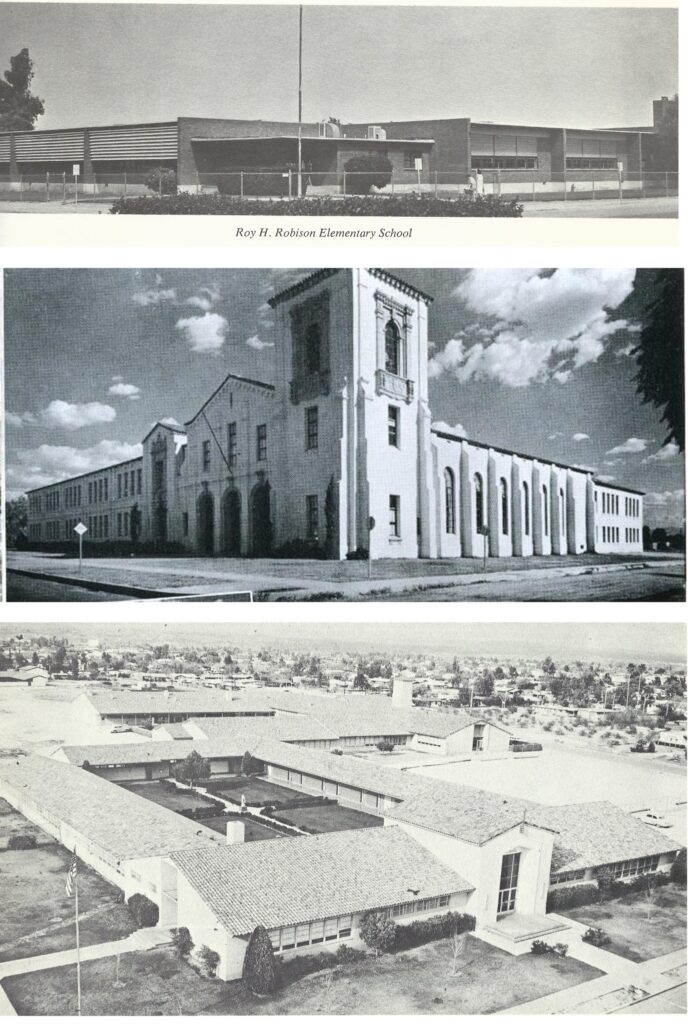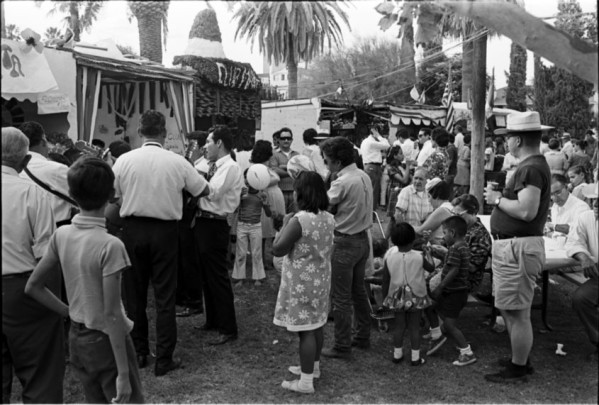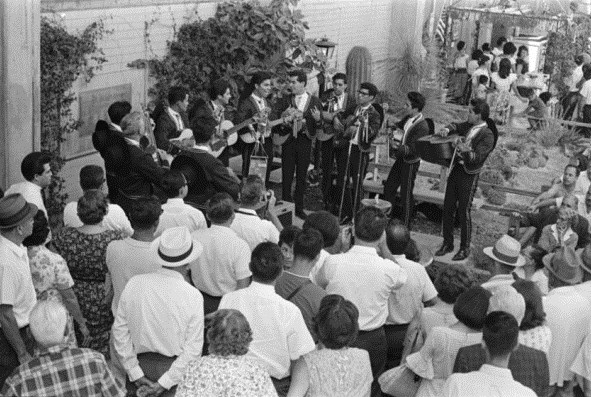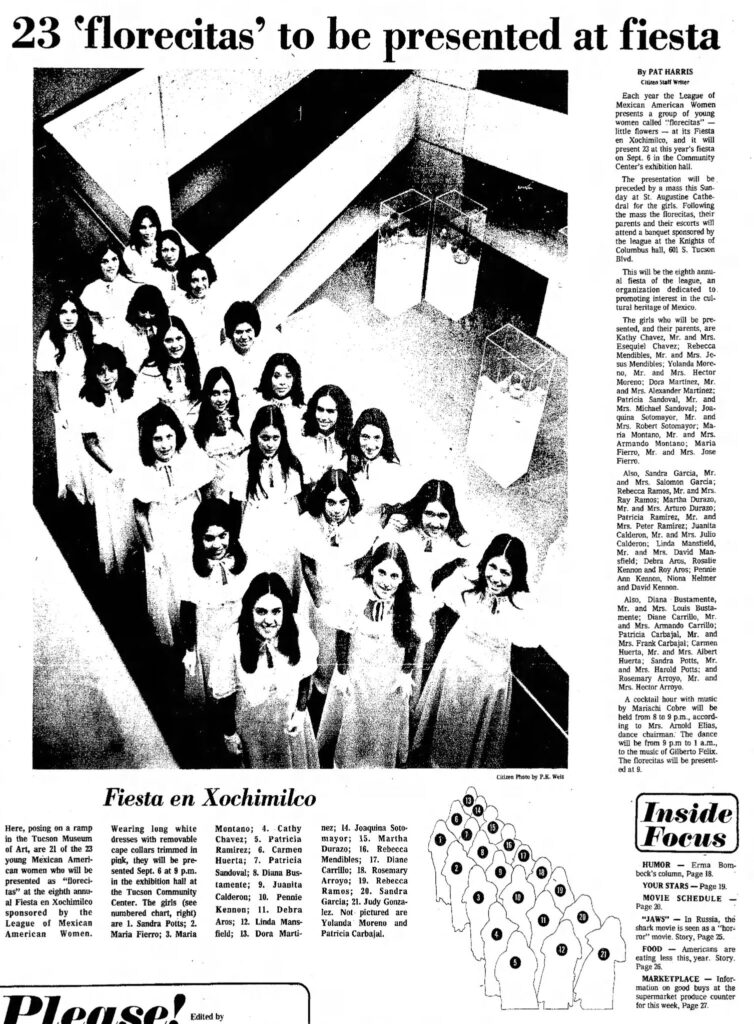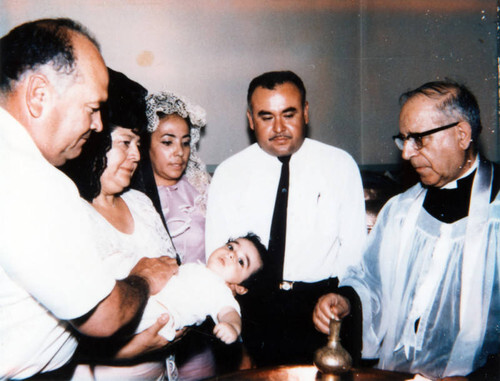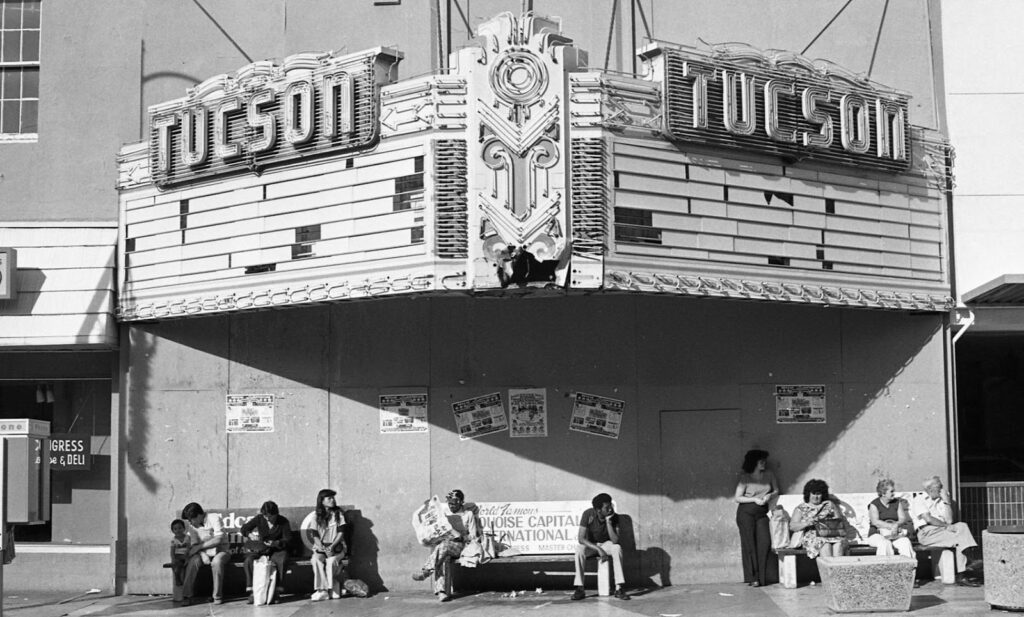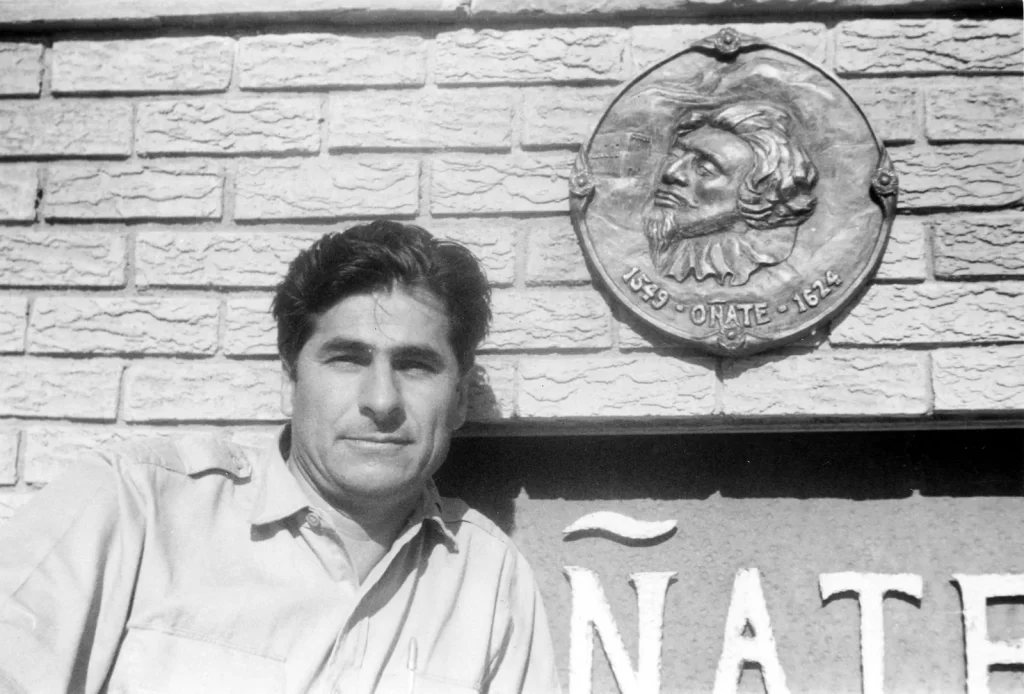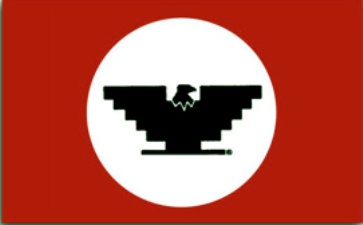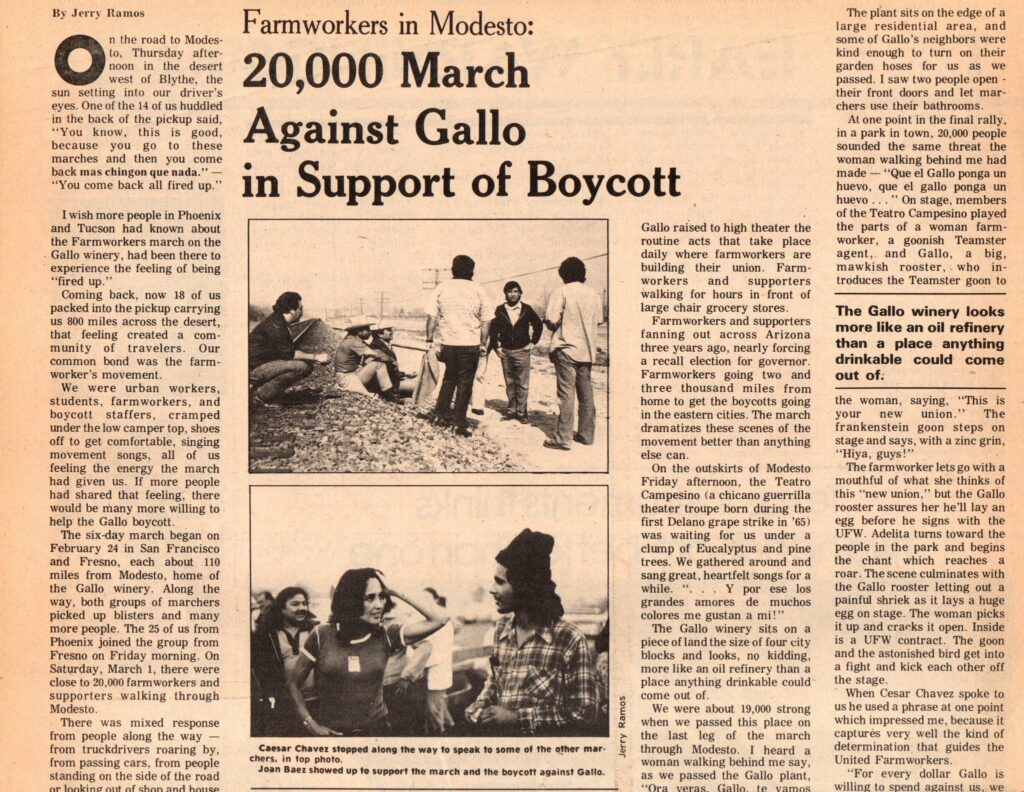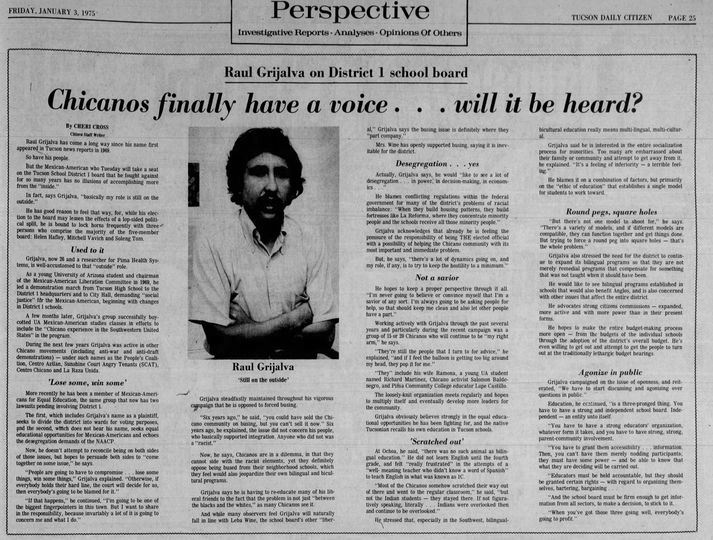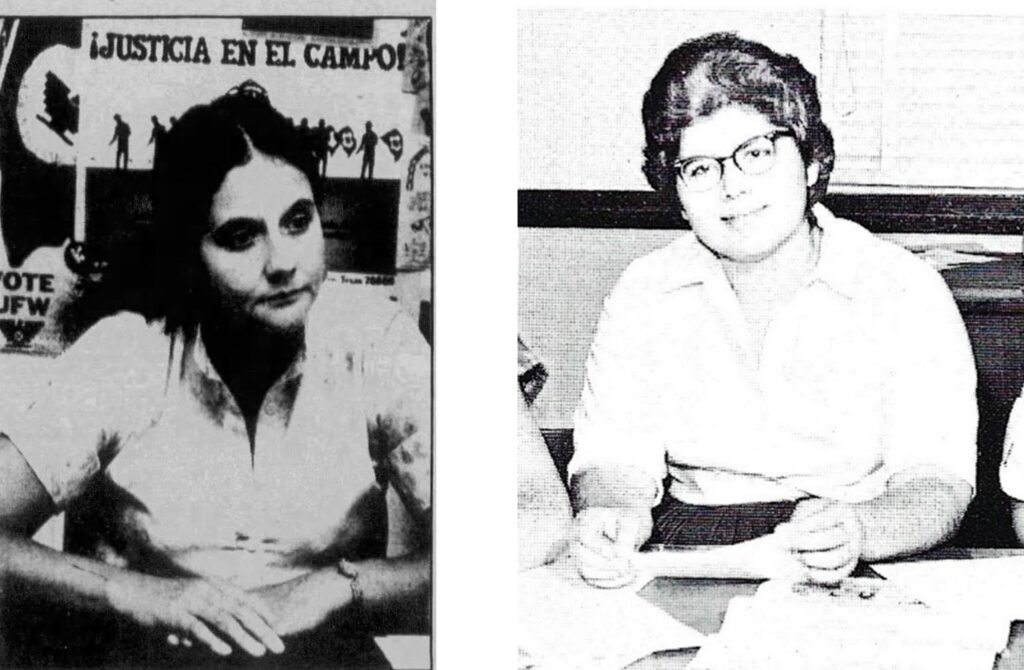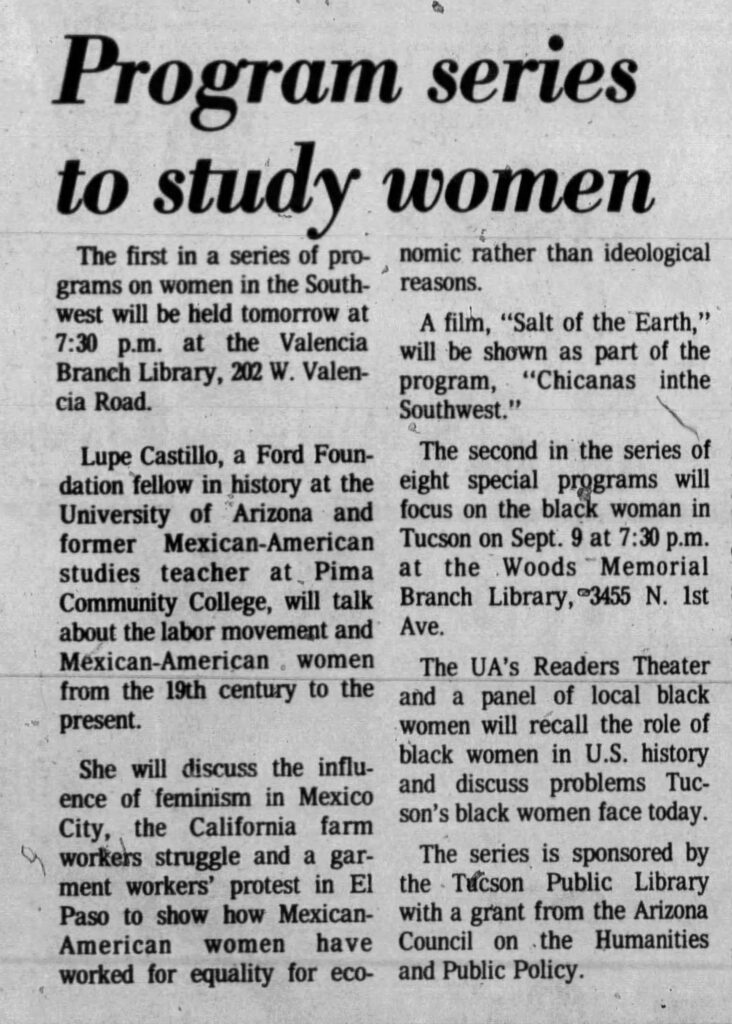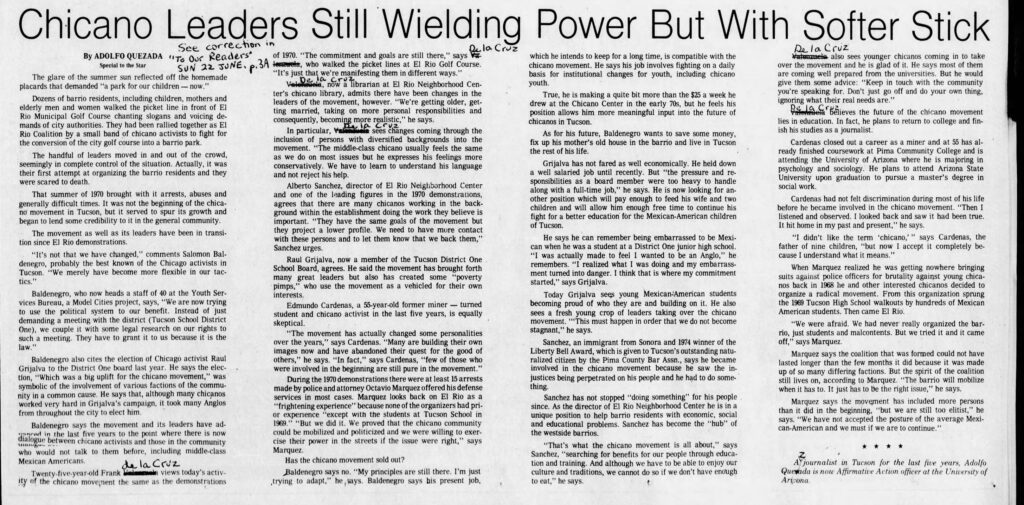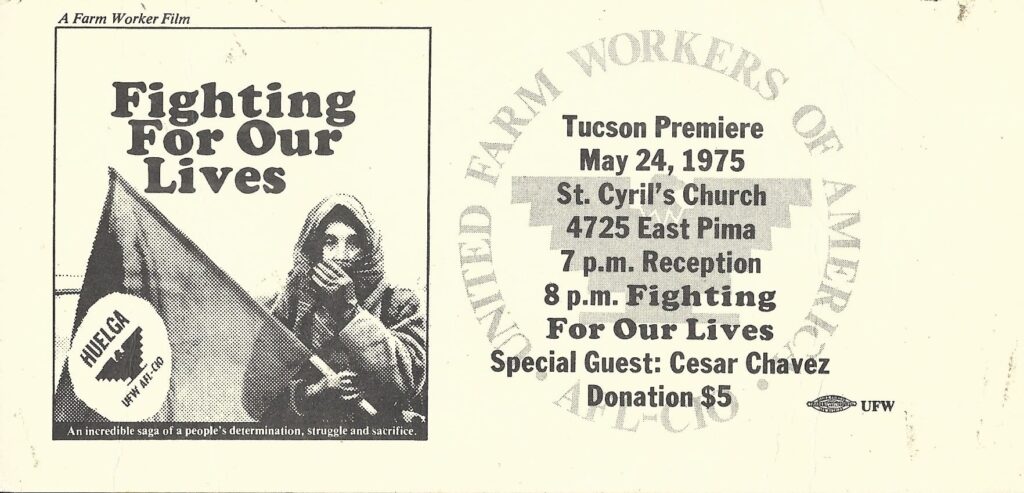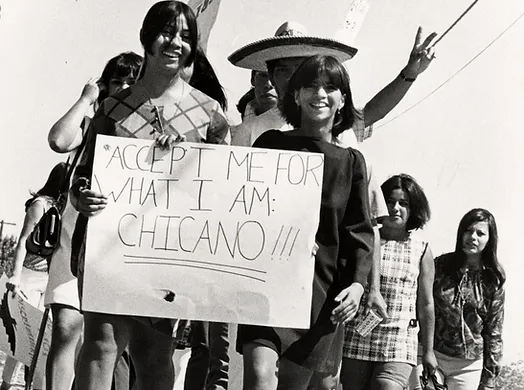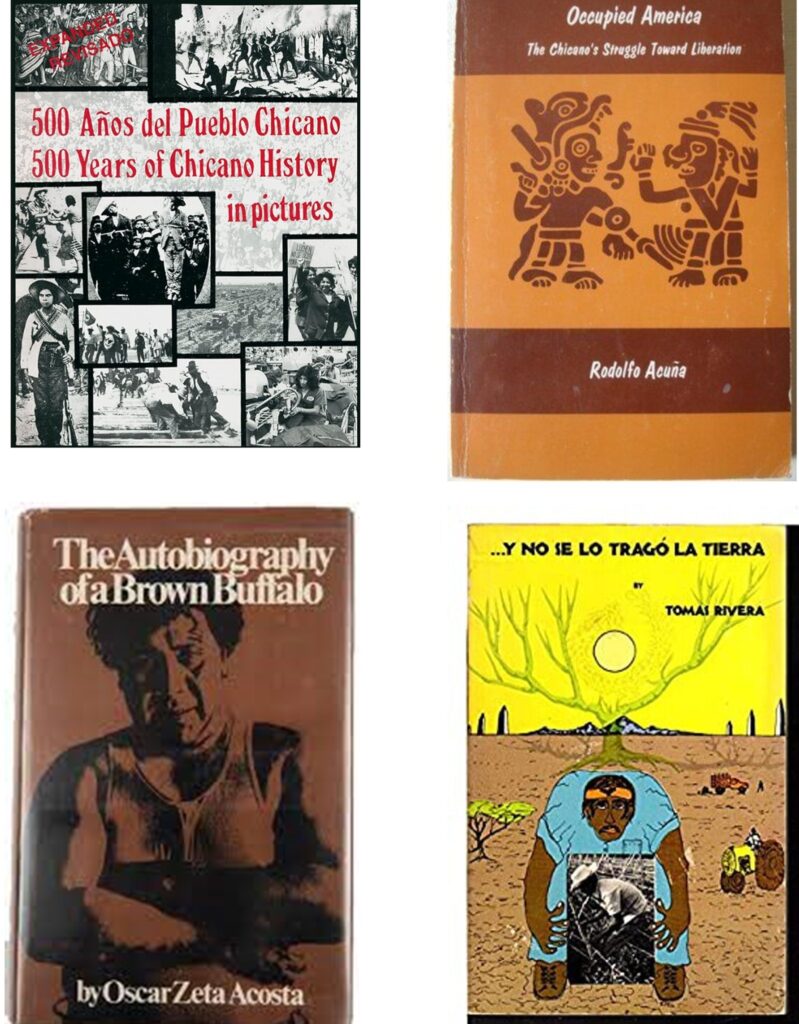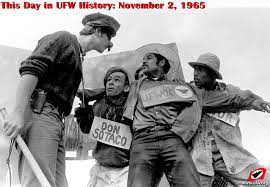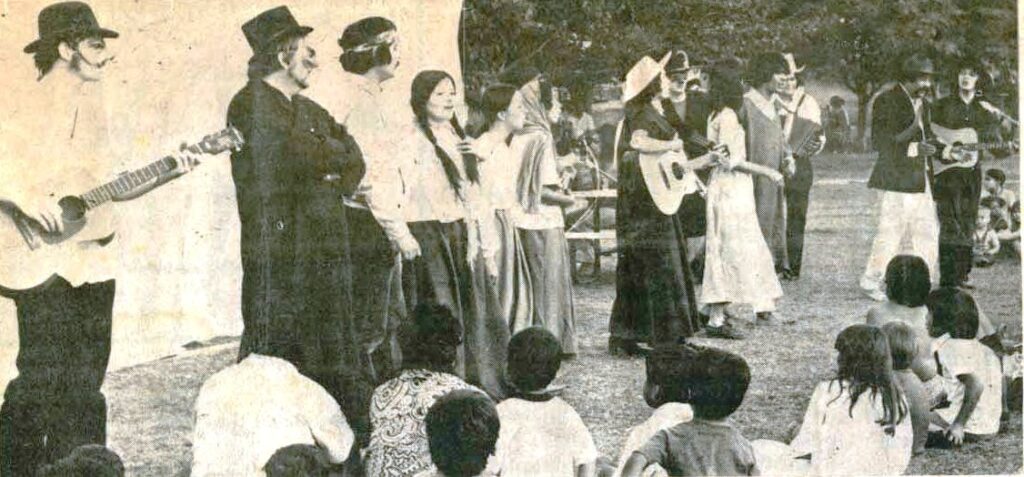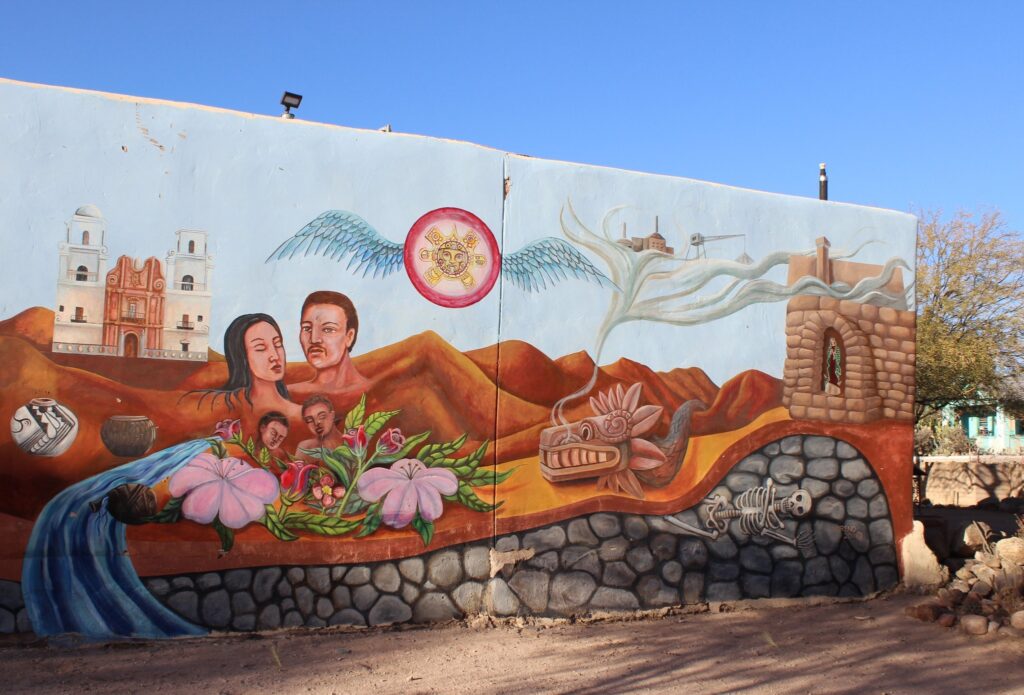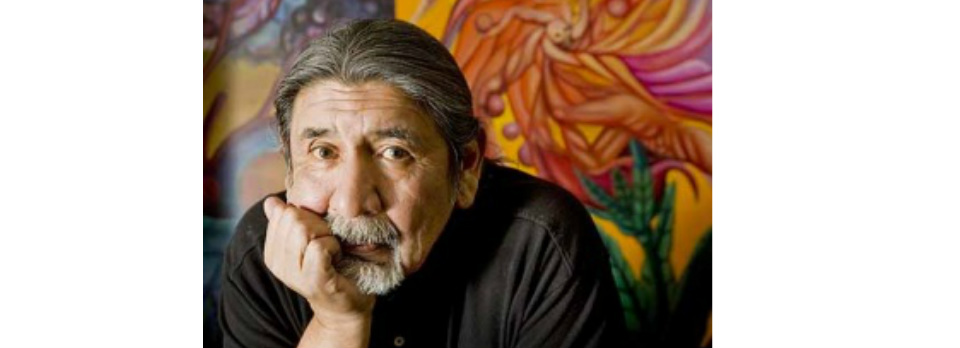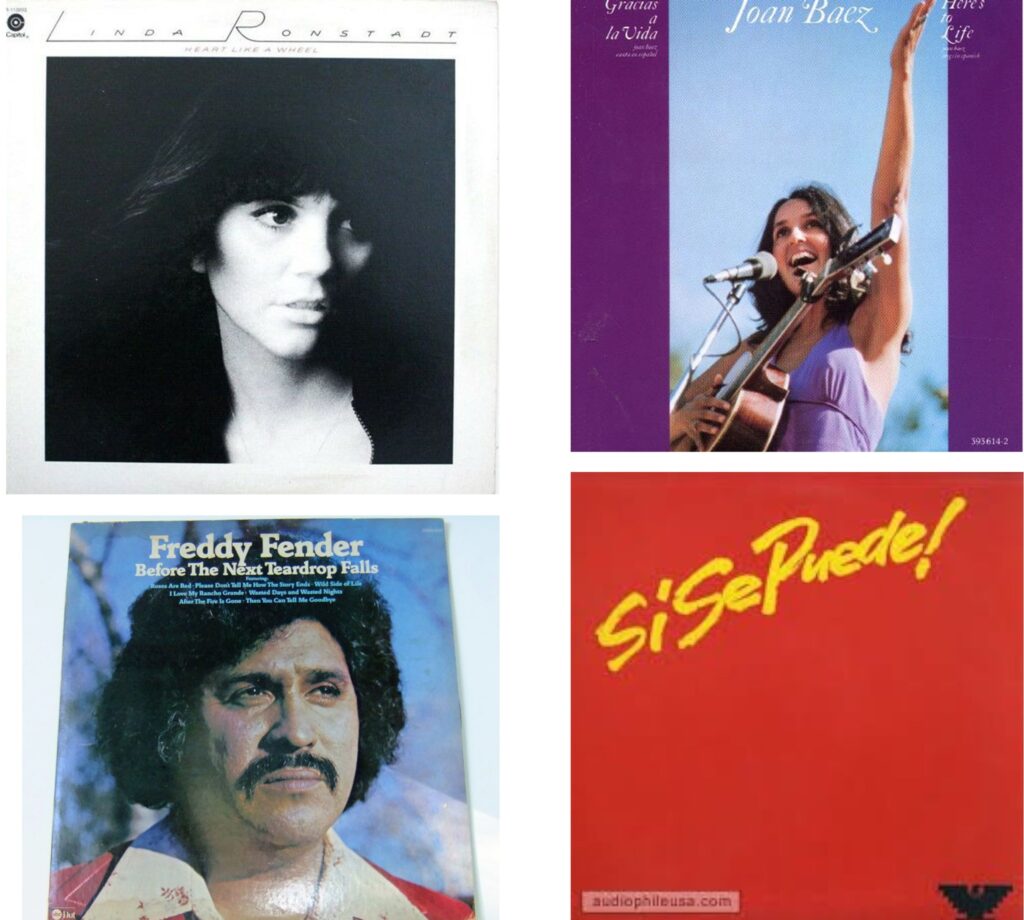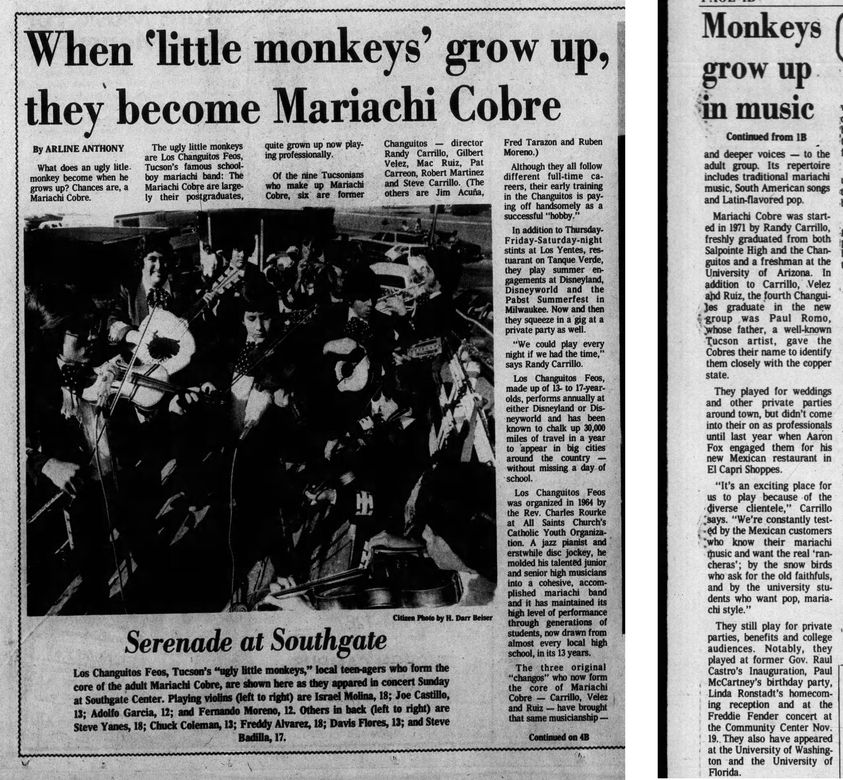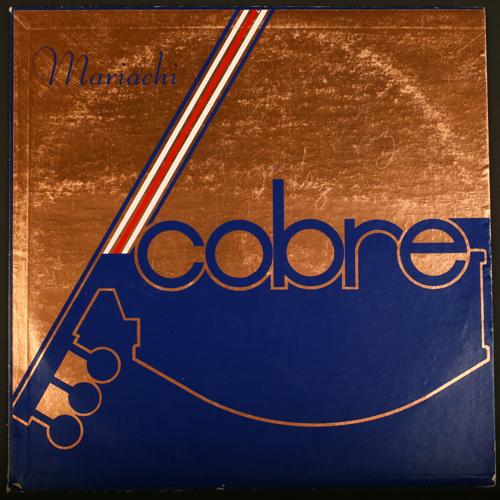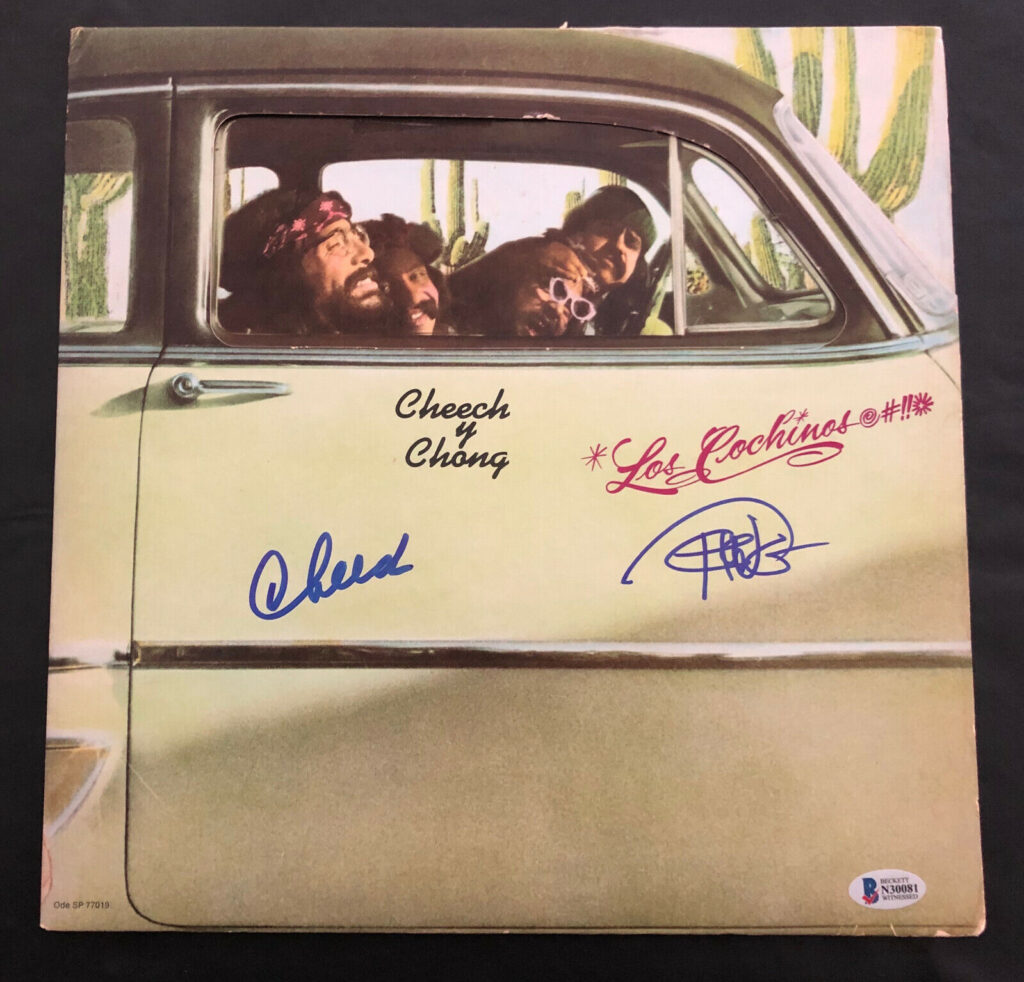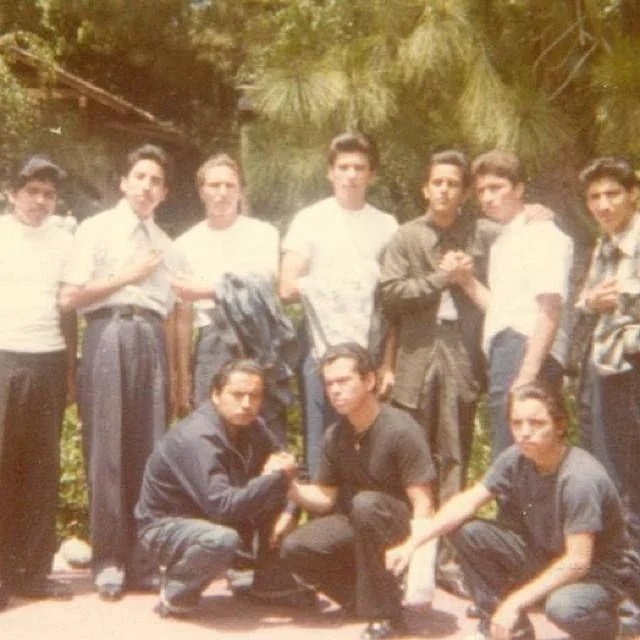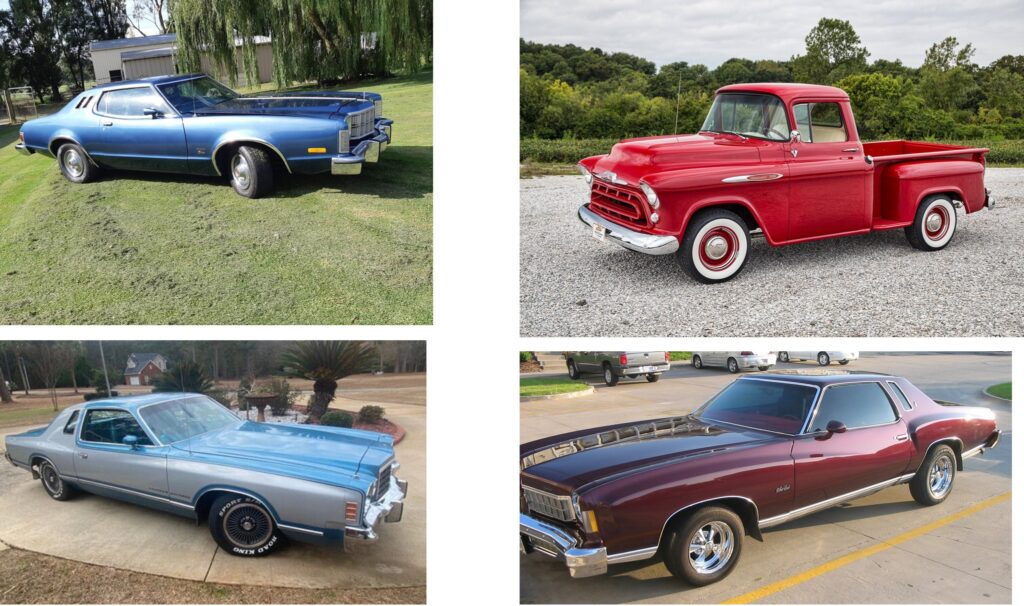This blog post started out as a presentation for a University of Arizona course called Public Art History (PAH) 420, a humanities class taught by Professor Jacqueline Barrios. I met Dr. Barrios last Fall. She and her students visited Special Collections last semester, and I gave a quick, impromptu lecture about the history of Mexican Americans in the US. My colleague Alba Fernandez-Keys also worked with the class and introduced them to Pre-Columbian art and other relevant materials that could be found in our collections. Dr. Barrios invited us back again this semester to work with a new crop of students. Their work involves studying the murals that were created at Tucson’s El Pueblo Neighborhood Center in the 1970s and 1980s and understanding why and how those came to be. By the end of the semester the students will present project proposals to help improve the Center. The El Pueblo Center opened in 1975, and has had its share of ups and downs. Within the past year or so, Congressman Raul Grijalva decided to move his local office to El Pueblo, and efforts are underway to revitalize the space. Dr. Barrios and her students are working in partnership with the Sunnyside Foundation, Congressman Grijalva’s office, the El Pueblo Library and others, including Special Collections staff like myself.
My task this semester was to provide some context as to how the Center came to be, so I decided to give a presentation about the history of the Chicano community in Tucson in the mid-70s, with a particular focus on 1975, since that was the year that the El Pueblo Neighborhood Center opened. I grew up in Tucson and have vivid memories of the Center, as the theater group, Teatro Libertad, had its home base there for a long time. I also spent a lot of time as a youngster visiting relatives and going to various events held on the south side of town.
I also happen to be a local history buff. I admit up front, however, that I am not a trained historian, nor do I pretend to be. The history of our community, however, has only been touched upon in a few written works. Tom Sheridan’s “Los Tucsonenses” comes to mind as one such work, but it does not focus on the 70s, when the Chicano movement in Tucson was in full bloom. Here’s hoping that a comprehensive history of that rich period of time in our community’s life will get the in-depth treatment and analysis it deserves at some point down the line. Perhaps this blog post will be of some use to whoever accomplishes that task.
The text of my presentation is included below. I’ve been adding graphics and articles to it, so it has developed into a much more detailed story than what I presented to the students recently. As I’ve noted elsewhere on this website, my blog posts are intended for educational purposes only, which is why I argue that it’s okay to borrow and include material from other sources. I consider it fair use. However, if someone comes along and claims ownership of a photo, graphic, or news article, and asks me to take something down because I did not ask for permission up front to post it, I won’t be too happy about it, but I’ll comply because I am not the copyright owner of much of this material. Again, I claim fair use for educational purposes only. I can be reached at joserobertodiaz@cox.net
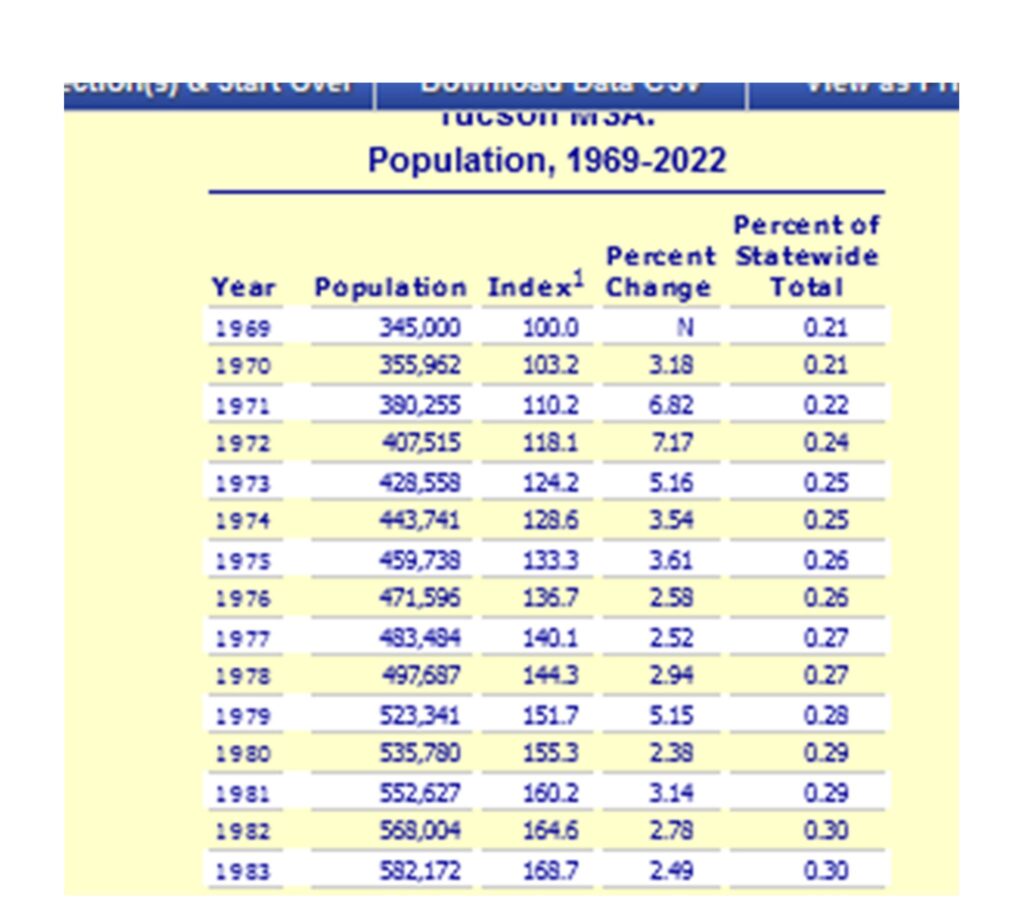
Chicano culture in the 70s in Tucson
Overview
- Americans of Mexican descent are not all the same. We are a diverse cultural group, and exist in every socioeconomic bracket, although the vast majority of us are working class or lower middle class. Many of us have been here for generations and can trace our roots back to the building of the Tucson presidio in the 1770s. Others are newly arrived.
- We do not agree on what to call ourselves. The word Chicano, however, was very popular in the 70s, particularly among young people. Many of us, especially our parents, never preferred to identify with the word Chicano or “chicano culture”. It had derogatory connotations carried over by previous generations. Assimilation and acculturation was the goal for many families.
- There have always existed subcultures, especially among our youth. In the 70s, there were stoners, rockers, cholos, “chicanos”, jocks, and geeks.
- Many Mexican American kids are as Americanized as other groups. Many do not speak Spanish, although it is often spoken among relatives and parents.
- In Tucson, we lived mostly on the west and south sides of town. Segregation, while not mandated and illegal, still existed. Very few Mexican American families resided east of Alvernon or north of Broadway, even in the 70s.
About Me
- I grew up on 22nd, just north of the railroad tracks, which was the dividing line, pretty much, between the southside and the rest of the city. I’m half indigenous and half Spanish.
- For the most part, I spent most of my free time in my youth in my own neighborhood. We went to the local swimming pool at St. Ambrose, to Randolph Park, where we played little league baseball, and the alley in back of my house, where I played with my friends, or 21st street where we played flag football. We went to Hi Corbett Field to watch the Tucson Toros and the Cleveland Indians play baseball.
- I attended Robison Elementary School. It had a mix of Anglo, Jewish and Mexican students. I then attended Mansfeld Jr. High, which was much more diverse. From there, I attended Salpointe, a Catholic high school, with mostly Anglo students. There was a small population of Mexican American students, and they came from all over the city. Salpointe charged tuition and it was expensive. My parents barely managed to make the payments.
- Due to economic necessity, neither of my parents graduated from high school. My dad left school before the 6th grade to work on the family farm, and my mother left after the 8th grade so she could work full time to help support her family. As a result, both of them knew from experience how important it was to get an education. My dad was especially encouraging and was always telling me to go as far as I could in school. Because I did well academically, I assumed that I would go on to college. However, one day a high school counselor at Salpointe confronted me and told me, “what makes you think you’re going to college? You shouldn’t get your hopes up. Your people are not college material”. Wow I could not believe my ears, but that was what things were like in the mid-70s, even at a so called progressive high school like Salpointe. I’m a pretty stubborn guy, and this only made me more determined to do my best in school and to pursue a college education.
- I believe that institutional racism, embodied by people like my high school counselor at Salpointe, was rampant in Tucson in the mid-70s. Very few Chicano students continued on to college, not because we weren’t capable of doing well academically, but because of ignorance and bigotry among adults with power and influence who kept us from advancing and who deliberately held us back.
The South Side
- Most folks now think of the south side as beginning at 22nd street, but in my opinion, the “south side”, especially back in the 70s, began in South Tucson. One could also say that it starts at the railroad tracks but no matter how one defines it, I’ve always felt at home there. When I was a child, my parents would shop at Southgate on S. 6th Ave, near the freeway. My mother would usually go to Saccani’s to buy us new school clothes every year and she would shop at McLelland’s for household goods. I would love to wander the aisles where the toys were located. There was also a Lucky’s (formerly Goodman’s) grocery store and a hamburger stand called Mr. Quick there. Every year, carnivals were held in a big lot in back of the shopping center. I went to a lot of them as a kid. We would also go to the movies at the Rodeo Drive-in, where Rudy Garcia Park is now located, or the Apache Drive-in out on the Benson Highway. The rodeo grounds also served as the site of the Pima County Fair back then, and we (me, my family, my friends) would go to that at times. On pay day, which was every other Friday, my parents would go grocery shopping at the El Grande on Irvington and Park, and on Sunday afternoons, they would take us to San Xavier or we would visit my grandmother, who lived in South Tucson.
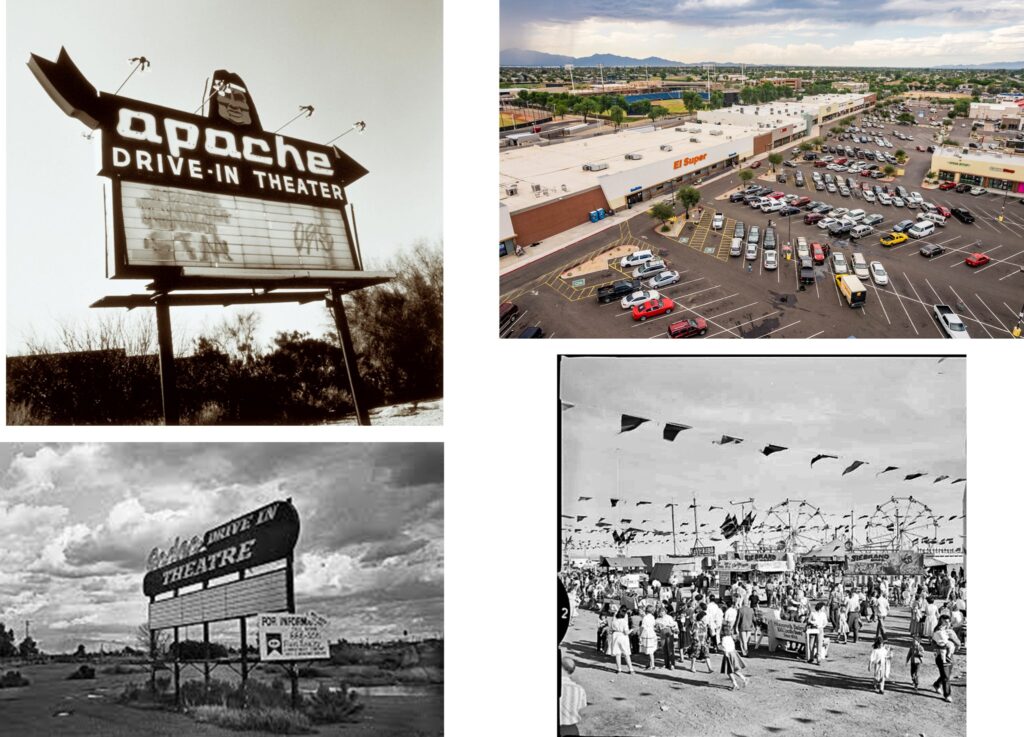

- My cousins, the Olguins, attended Elvira Elementary, Sunnyside Jr. High, and Sunnyside High School in the sixties and seventies. Our family used to visit my aunt Mary and Uncle Fernando and their kids regularly, especially on Easter and Thanksgiving, and my older brother and I spent time with our cousins in the summer a lot. It was our version of summer camp. LOL. It felt like they lived in another town because while there were people living throughout the south side, it was not as densely populated as it is now. I recall my parents driving along S. Park or S. 6th and passing by big swaths of undeveloped land, filled with nothing but creosote bushes between Ajo and Valencia on the drive to my Aunt and Uncle’s house.
- In 1981, TCE contamination on Tucson’s south side became headline news. I remember visiting my cousins who lived on Elvira Rd and 6th Ave, and noticing how cloudy and bad tasting their drinking water was. Their bathroom tile was also falling out because of the contamination from TCE. Many people became ill with various forms of cancer. One of my cousins, my age, died of cancer of the jaw and mouth.
The broader community
- High schools that served the Mexican American community and the south side included Tucson High, Pueblo, Cholla, Sunnyside and later, Desert View. The majority of students were Mexican American or Native American.
- Gathering places: Dances and concerts were held at the El Casino Ballroom in South Tucson or the Del Rio Ballroom, on Speedway near the freeway.
- Fiestas held during El Cinco de Mayo and el 16 de Septiembre were held downtown at Armory Park, at Santa Rita Park, then Kennedy Park.
- The Community Center was popular for concerts by big name artists like Santana, the Eagles, Linda Ronstadt and the Rolling Stones. Boxing matches were also held here
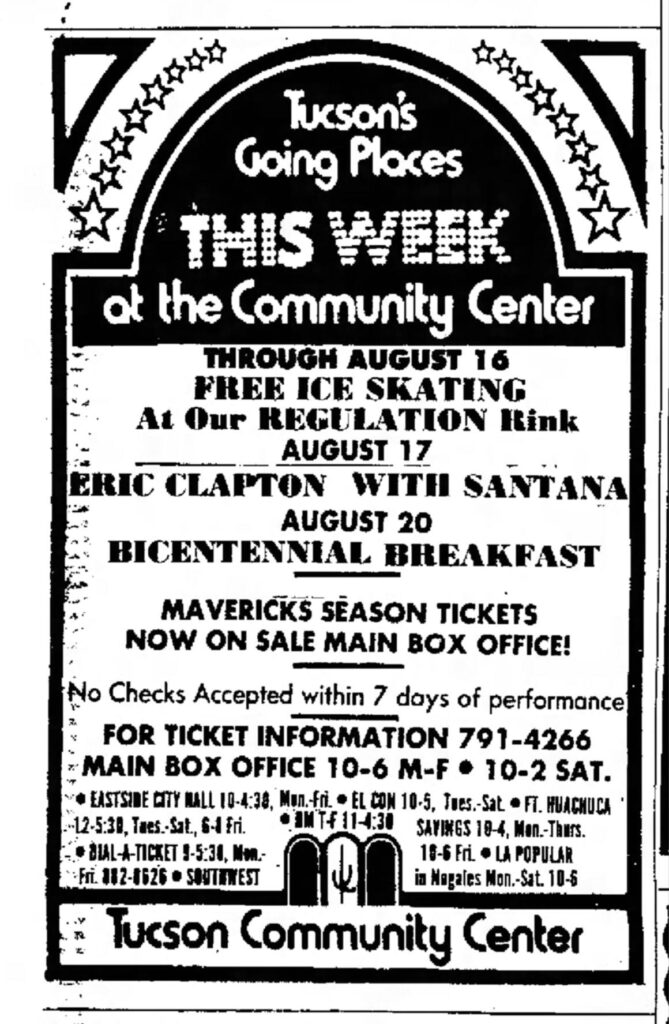
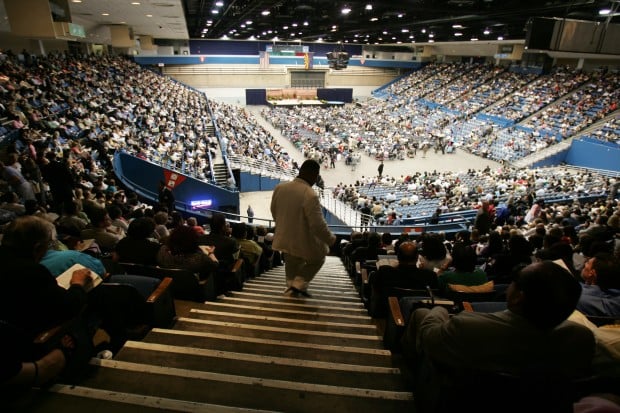
Paco Flores was a Tucson boxing legend, and many of his matches were held at the Tucson Community Center. Flores was born in Cananea, Sonora Mexico but moved to Tucson when he was 8 yrs old. As a welterweight fighter, Flores was 19-5 with 11 knockouts. By the end of his career, Flores had won three golden gloves, one as a featherweight, welterweight, and middleweight.
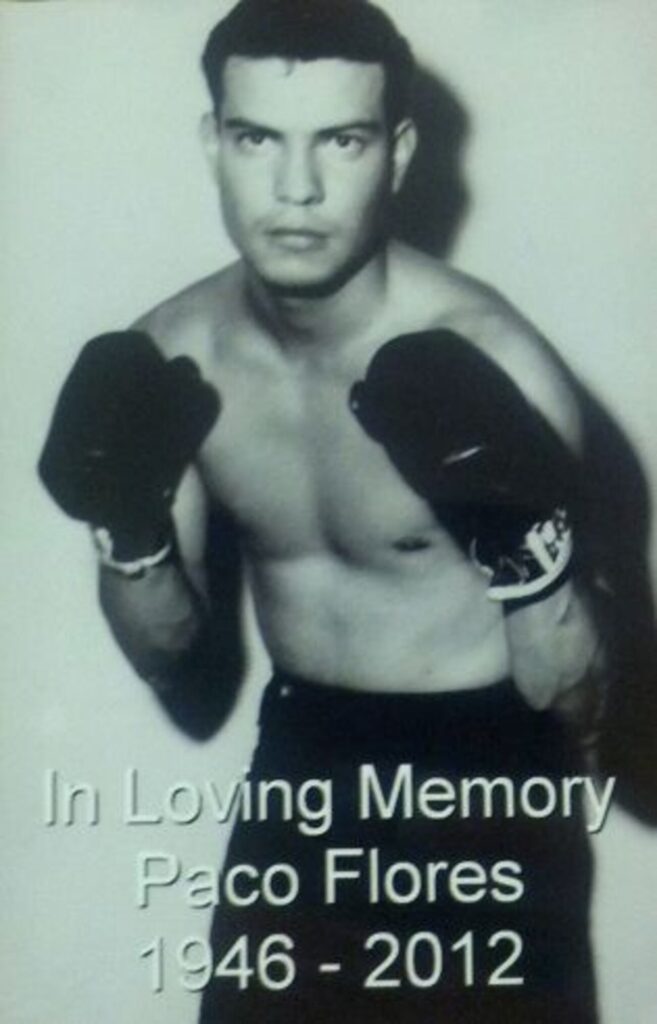
- Every year, the League of Mexican American women sponsored an event called “La Fiesta de Xochimilco” that included a dance where a number of young women were presented to the community as “Florecitas”. It was our version of the “cotillian ball” where debutantes made the entry into “society”.
Churches were also places where our community gathered for events like baptisms, funerals, weddings, and first holy communions. The majority of the population has always been Catholic, but there have also existed various protestant denominations with predominantly Mexican American congregations scattered throughout the south side.
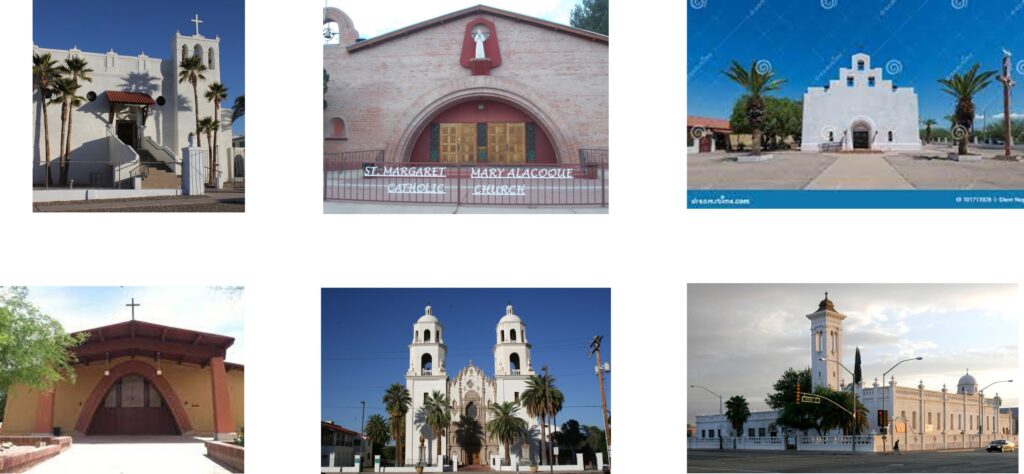
- As noted, Tucson’s youth were represented by various subcultures. The south side, however, had an abundance of young people who were into cars and “cruising.” Places like Kennedy Park and Randolph Park were crammed on the weekends with long lines of cars filled with teenagers driving very slowly through the parks. Drinking beer and smoking pot was common among the youth of the community. However, gangs weren’t around that much. The film, Boulevard Nights, premiered in 1979, but it depicted life in East LA in the 70s. Tucson was much calmer than L.A. at the time. The community was smaller, but growing.
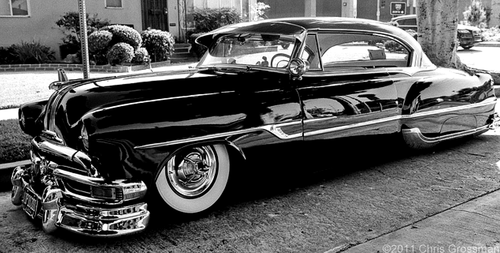

- Radio: KXEW and KEVT radio were very popular among the older generation. KIKX, KTKT and KWFM were big among our youth. In the early 70’s, KIKX took dedications from listeners. It was a very popular thing to do among young teenagers like me. Later, KHYT hit the airwaves, and young djs like Raul Aguirre and Neto Portillo, Jr. brought us Chicano music, Latin jazz and salsa.
A note about downtown—
Up until the mid-60s, downtown was home to a large Mexican American population. The tearing down of the old barrio occurred in 1968, and all the families that lived there were dispersed to other parts of town. It was a mess. Urban renewal did not have the effect that was intended, to draw more white, affluent people to downtown. Instead, many storefronts were boarded up. Businesses had moved out to the newer parts of town. The Fox Theater was offering 3 movies for $2, and it was falling apart. There were dive bars galore and prostitutes walked the streets in broad daylight. JC Penney, Woolworth’s and Jacome’s were still open, however, but not for long.
- The Community Center attracted people, but was dead most of the time. La Placita Village bombed and never attracted many visitors. Some say that all the steps made it difficult for older people to comfortably navigate the complex, which was a complicated mess to begin with. Others say that an old “bruja” from Barrio Viejo put a spell on the place to make it fail. Who knows? It did indeed fail over time The entire complex was eventually torn down and the space is now home to a giant condominium complex.
Politics and consciousness raising
- Social movements were abundant in the early 70s. The women’s movement, the gay liberation movement, the black power movement, and the American Indian Movement all took center stage, as did the Chicano movement and the farm worker movement. Consciousness raising was happening everywhere.
- Within the Mexican American community, from, LA to Denver to Tucson to the Texas-Mexico border, we witnessed major acts of protest, including the Chicano Moratorium, high school walkouts in East LA and Tucson, strikes, boycotts and many other acts of civil disobedience that occurred throughout the Southwest. Youth were forming organizations like the Brown Berets and organizing against bad schools, bad policing, bad housing, and a lack of social services.
- El Plan de Santa Barbara was written. It outlined educational goals incorporating Chicano studies into high school and college curricula. Bilingual education advocates were fighting to have bilingual ed implemented in the schools.
- Political organizations like the “La Raza Unida Party” led by Jose’ Angel Gutierrez, were working to raise the consciousness of their communities and to have Chicano representation on school boards, city councils and state legislatures.
- In some parts of the country, people were fighting to have their land grants honored. Reies Lopez Tijerina led the battle in northern New Mexico. He was targeted by the FBI and vilified in the press as mentally unstable.
- Rodolfo Corky Gonzales was another leader who authored the poetry book Yo Soy Joaquin. He was from the Denver area and organized the “Crusade for Justice”. The FBI also targeted him and his work. Their cointelpro program targeted activists in the Native American, Black and Chicano communities.
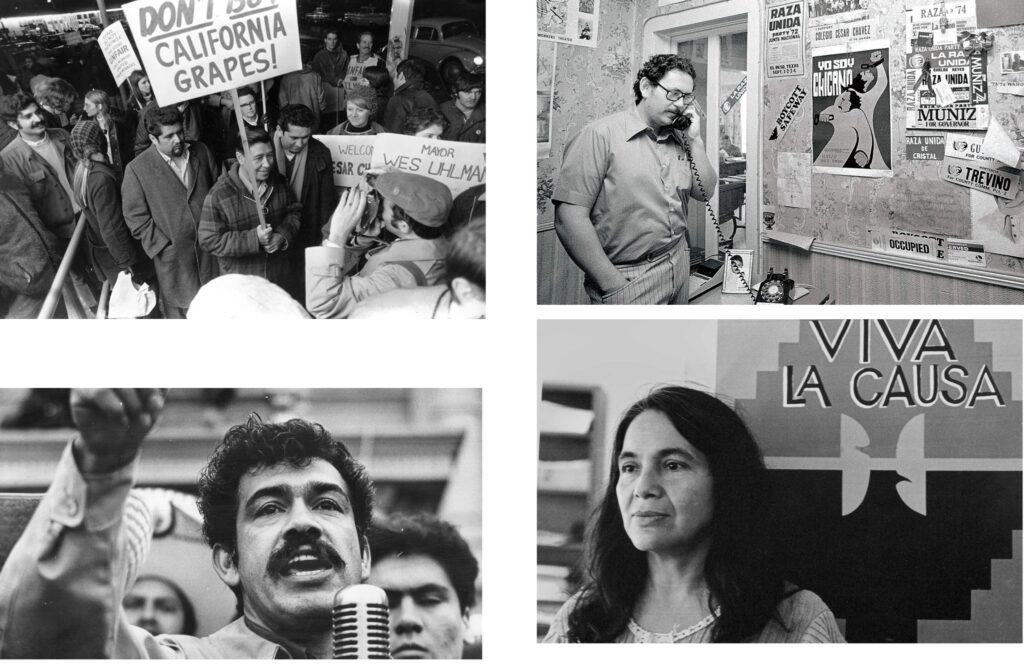
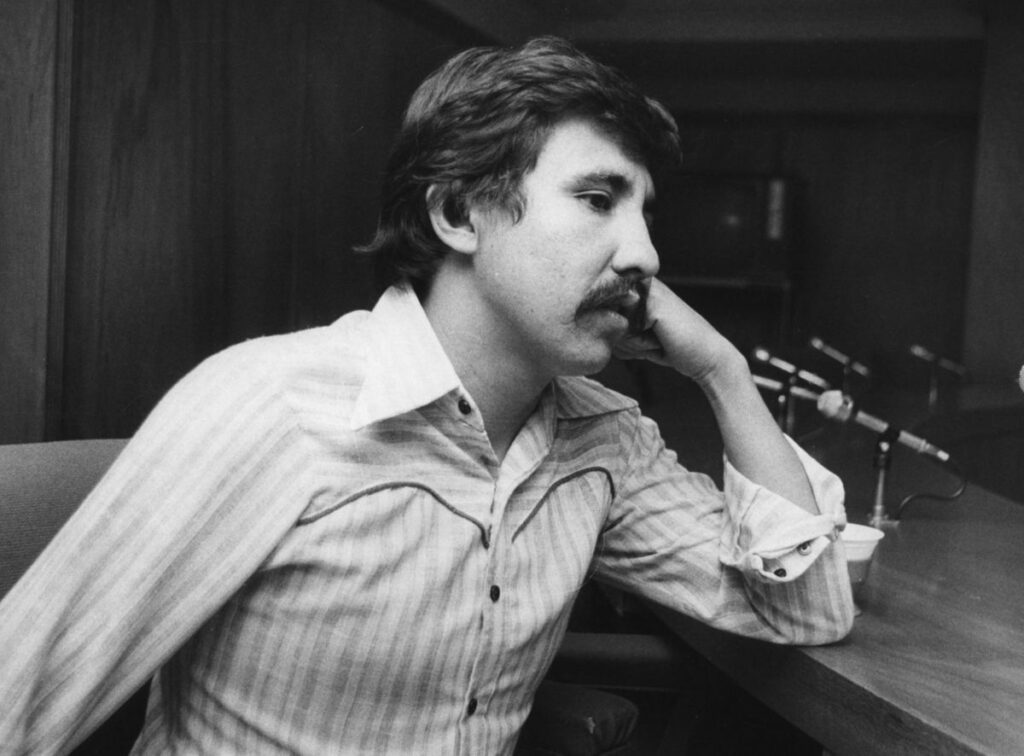
The local movement also included women. The Manzo Area Council, for example, worked in the barrio to help provide social services to families with a variety of needs. Margo Cowan managed the organization for many years. She and Isabel Garcia, another Manzo Area Council associate, later became lawyers and have fought for years for immigrant and Chicano rights. Lupe Castillo and Raquel Rubio-Goldsmith were Chicano/a Studies professors at Pima College and they also worked for Manzo. A new documentary is in the works that highlights the work of these amazing Chicanas. You can find out more at the following website: Las Mujeres de Manzo.
Here’s an example of the kind of work done by women in the community.
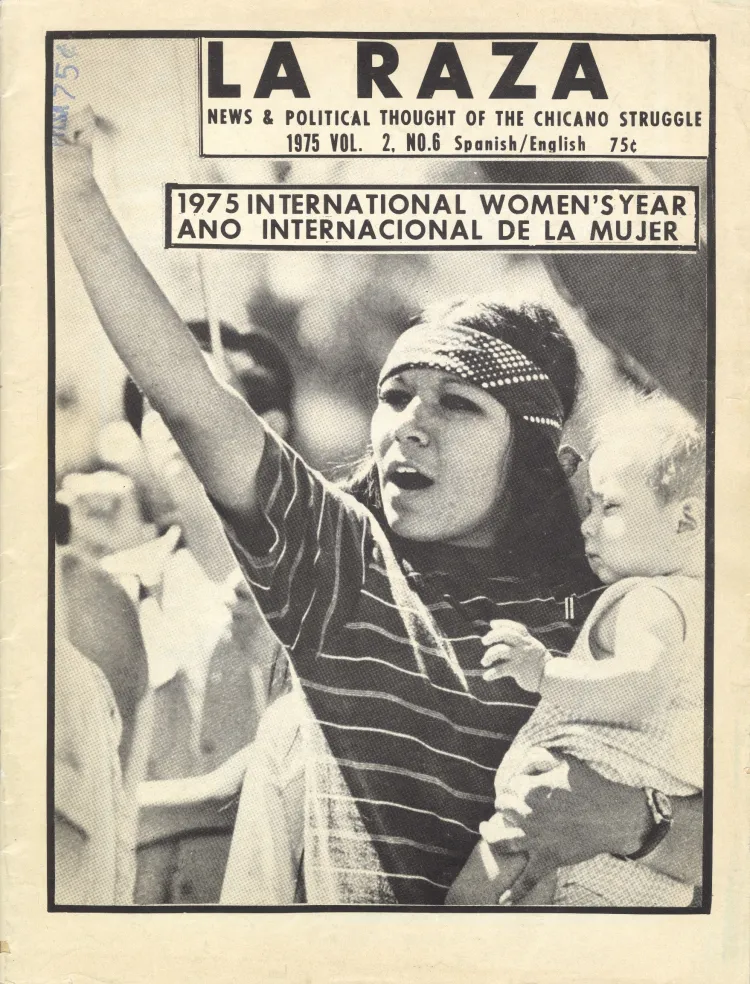
The following two articles appeared together in the June 15, 1975 edition of the Arizona Daily Star. They speak to the results of the community fighting for recognition and demanding services that other areas of town were provided.
- As was noted, the FBI was hard at work infiltrating the various movements with the intention of destroying them. The war in Vietnam continued into the mid-70s and ended shortly after Richard Nixon resigned as President of the United States in ’74.
- By the end of the 70’s however, there was a shift toward conservative beliefs, and a rise in evangelical Christianity and values. Attacks on minority communities became more prevalent. Affirmative action was challenged, and when Ronald Reagan became president, there was an increased crackdown on activism (union busting) and an increase in surveillance. The US supported dictators in Central America, causing many refugees to flee their homes and head up north to the US.
My own political awakening
It was in high school in the mid-70s that I became aware of my cultural roots and history. During the second semester of my freshman year, I took a class called Cultural Awareness, which opened my eyes to the history of the Mexican American people in the southwest. It was taught by a man named Ron Cruz. I also took classes from his wife Jane, who taught Chicano literature. I learned nothing like this before. Prior to this I was influenced mostly by what was on television and the radio. A lot of Mexican American kids my age were in the same boat.

The class changed my life. I became interested in politics, and started participating in the farm worker support movement, where we picketed local businesses for selling grapes and Gallo wine. I got involved in trying to get “scab” lettuce out of the high school cafeteria, and I even got the chance to meet Cesar Chavez in Tucson.
Chicano cultural production
Literature:
- There was an abundance of literature about Chicanos published in the 70s, This included both non-fiction and fiction. Some of the major works that appeared in the 70s include Rudolfo Anaya’s Bless Me, Ultima, Rodolfo Acuna’s Occupied America, The Chicano Manifesto by Armando Rendon, Y No Se Le Trago’ La Tierra by Tomas Rivera, the novel “Chicano” by Richard Vasquez, Oscar Zeta Acosta’s Autobiography of a Brown Buffalo, and 500 Years of Chicano History, edited by Elizabeth Martinez.
Theater:
- El Teatro Campesino began life in the mid-60s in the fields of the San Joaquin valley during the farm worker strikes, under the direction of Luis Valdez. Within a few years El Teatro de la Esperanza, from Santa Barbara, was also producing plays, as was Teatro Libertad in Tucson. The form of theater they employed was political street theater, which was modeled after the work done by the San Francisco Mime Troupe.
- Teatro Libertad looked to writers like Bertoldt Brecht for inspiration. One of their plays, La Jefita, for example, was modeled after Brecht’s work, “The Mother”.
Art:
Mural artists in East L.A. influenced artists in the rest of the Southwest. In Tucson, several artists created murals at the El Rio Neighborhood Center and also at the El Pueblo Neighborhood Center as well as in other parts of the city. They incorporated in their works a lot of Pre-columbian and contemporary political motifs.
Music:
- Popular music was very diverse and everyone, it seems listened to the radio. Mexican Americans, since the 50s, have gravitated toward oldies, R & B and soul music. Beginning in the mid-60s, groups emerged that incorporated both Latin rhythms, elements of R&B, soul and later funk. They included Santana, Rufus, War, Tierra, Los Lobos. Funkadelic, Rick James, The Commodores, Malo, and El Chicano, to name a few. Some of the songs sung by these groups were in Spanish as well.
- Musica Tejana was sung in Spanish and quite popular at the time. Little Joe y La Familia and Ruben Ramos and the Texas Revolution were all the rage. Other groups that sang in Spanish included Ritmo Siete and Ray Camacho and the Teardrops. In the mid-seventies disco became a predominant genre.
- Freddie Fender, Linda Ronstadt were also quite popular and both sang a lot of country, although Linda Ronstadt was mostly known for her rock music. Oldies was all the rage among the lowrider/cholo subculture. Salsa, while especially big on the east coast, was not all that popular in this region.
- Daniel Valdez’s album Mestizo, and Joan Baez’s album Gracias a la Vida were political in nature. Later, the farmworker album, Si Se Puede was produced and it featured Los Lobos, a group from East LA that started out by playing traditional Mexican son jarocho, boleros and other Mexican tunes.
- Locally, the members of Los Changuitos Feos, a youth mariachi group founded in the Sixties, entertained audiences throughout the world. Some of the original members went on to form Mariachi Cobre.
Film, television and performance art:
- Cheech and Chong and Richard Pryor were our favorite comedians, and on tv, we watched Chico and the Man, Sanford and Son and The Jeffersons. By the mid-70s there was Spanish language tv and telenovelas were big. Before that we had Mexican Theater that aired on Sunday mornings.

- There were not many feature films including Chicanos that were produced in the mid-70s. It wasn’t until the end of the decade that Zootsuit and Boulevard Nights were released. Both films proved to be quite popular.
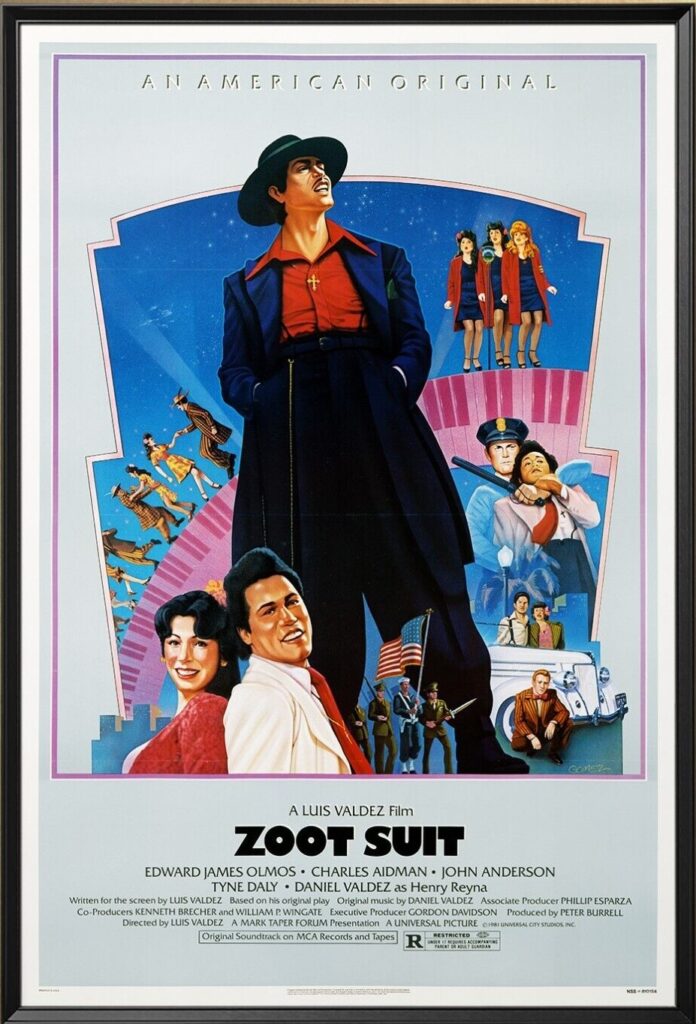
Fashion:
Young people in our community wore mostly bell bottoms and t-shirts at the beginning of the decade. Both the girls and the boys had straight long hair, or long, bushy hair. By the mid-70s, leisure suits, khakis and white t-shirts (the pinto look), and polyester were very popular. Hats were popular too, as were wings on girls hair. The cholo subculture included young women with big hair, black lipstick, and pencil thin eyebrows. They usually wore jeans and body suits, and the guys wore their hair slicked back. Khakis, t-shirts or pendleton shirts buttoned all the way up and black shoes were the norm for the guys. Not everyone wore these types of clothes, however. There was a lot of diversity in the way kids dressed.

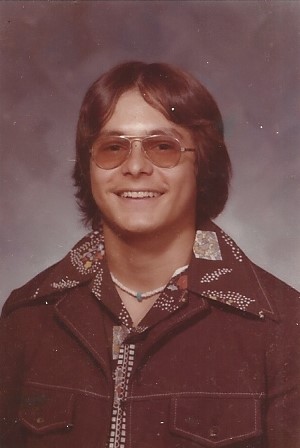
Popular cars of the era included the 1975 Ford Torino, Chevy trucks from the 50s, the 1975 Chrysler Cordoba and the 1975 Monte Carlo.
That’s all, folks!


